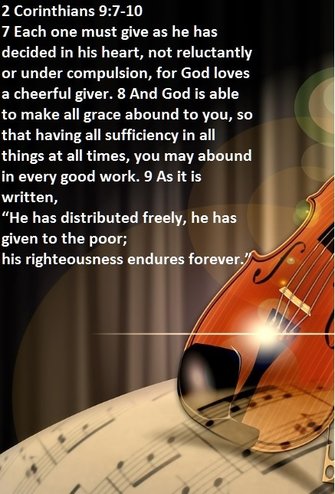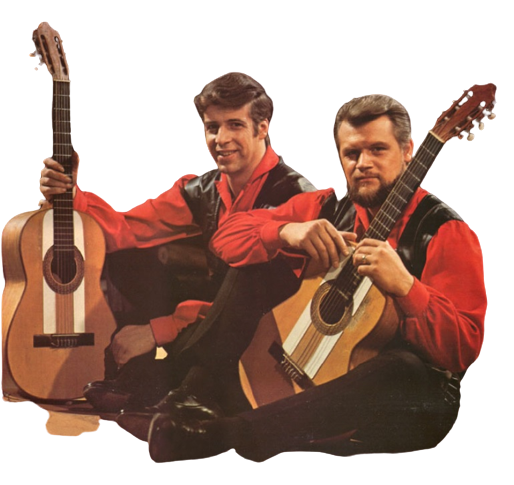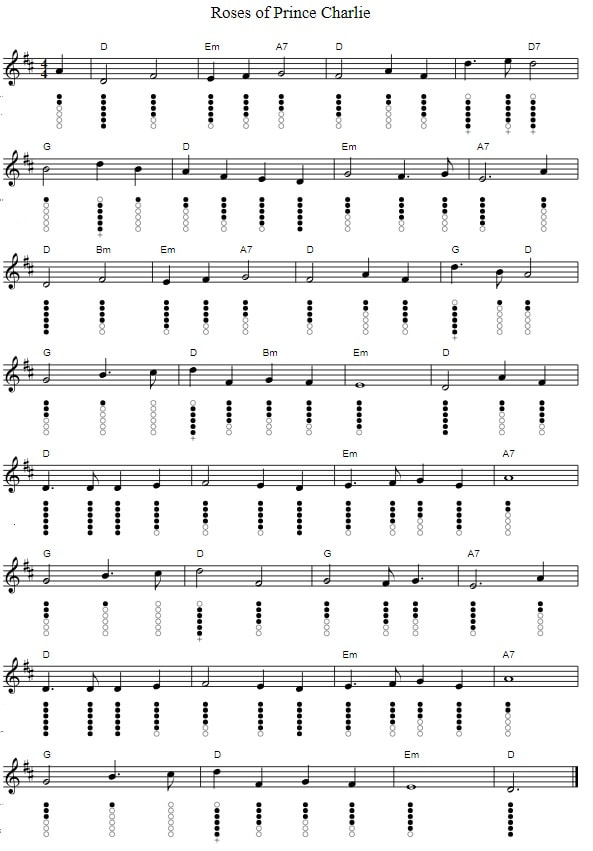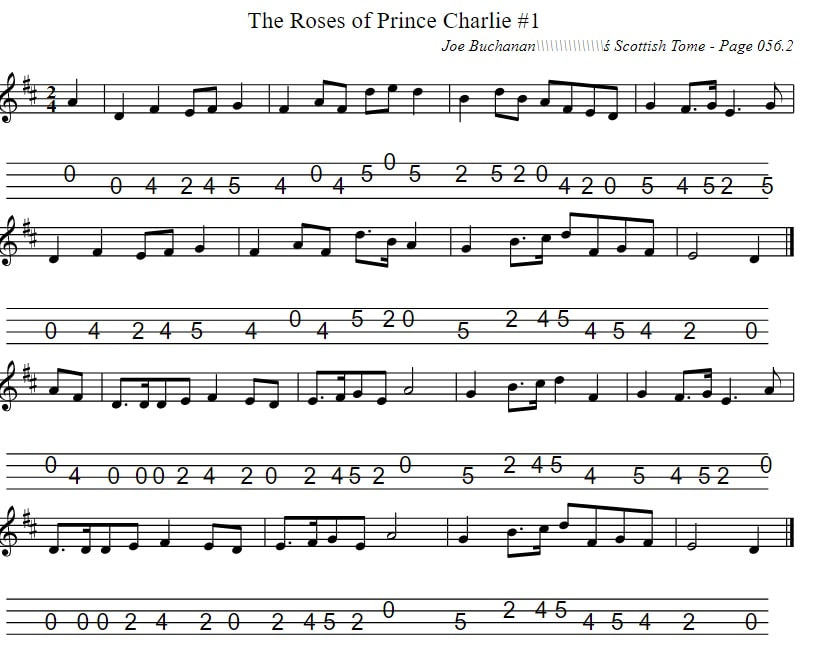THE ROSES OF PRINCE CHARLIE LYRICS AND CHORDS
2/4 (R.G. Browne) Corries’ live version on YouTube in D’ major with capo on the 1st fret. This is one of many songs on the site by The Corries about Bonnie Prince Charlie. Guitar work by Marc.The sheet music is included.Roses of Prince Charlie Mandolin 4 String Banjo Tab now included.
The rose has long been a symbol of love, beauty, and admiration, and throughout history, it has also been used to represent royalty and nobility. One such famous rose, known as the 'Roses of Prince Charlie,' holds a special place in the hearts of many, as it is not only a symbol of love, but also a symbol of courage, loyalty, and the enduring legacy of a beloved prince.
The story of the Roses of Prince Charlie begins in the 18th century, during a time of great turmoil and political upheaval in Scotland. Prince Charles Edward Stuart, also known as Bonnie Prince Charlie, was the grandson of King James VII of Scotland and II of England, and was seen by many as the rightful heir to the throne. In 1745, at the young age of 24, Prince Charlie embarked on a daring mission to reclaim the British throne for the Stuart dynasty, which had been deposed in the Glorious Revolution of 1688.
As he marched through the Scottish Highlands, rallying support for his cause, Prince Charlie was met with unwavering loyalty and devotion from the Scottish clans. Among them was the Clan MacDonell of Glengarry, who were staunch supporters of the Jacobite cause and were led by the Chief, Alexander of Glengarry. It was during this time that the clan gifted Prince Charlie with a special rose, known as the 'Jacobite Rose' or the 'Roses of Prince Charlie.'
The Jacobite Rose was a unique hybrid of two types of roses - the red Damask Rose and the white Rose of Sharon. Legend has it that the rose was created by a Jacobite sympathizer, who crafted it as a symbol of the union between the Scottish and English thrones. The red and white colors of the rose also held significant meaning - the red representing the bloodshed of the Jacobite cause, and the white representing the purity and innocence of Prince Charlie.
The Roses of Prince Charlie quickly became a symbol of hope and perseverance for the Jacobite cause, and were often worn by supporters as a sign of their allegiance. It is said that Prince Charlie himself wore the rose on his lapel as he marched into battle, with his loyal clansmen by his side. The rose also became a symbol of unity and solidarity among the Jacobites, who were willing to risk everything for their prince and their cause.
However, despite the bravery and determination of Prince Charlie and his supporters, the Jacobite Rising of 1745 was ultimately unsuccessful. The Battle of Culloden in 1746 marked the end of the Jacobite cause, and Prince Charlie was forced to flee into exile. But even in defeat, the Roses of Prince Charlie continued to hold a special place in the hearts of the Scottish people, and the rose became a lasting symbol of their unwavering loyalty and devotion to their prince.
Today, the Roses of Prince Charlie continue to be a beloved symbol of Scotland and its rich history. The rose is often featured in Scottish tartans and other traditional attire, and is also used as a symbol by various Scottish organizations and clubs. The rose has also been immortalized in literature and art, with many poems, songs, and paintings paying tribute to the brave prince and his enduring legacy.
In conclusion, the Roses of Prince Charlie hold a special place in the hearts of many, not just as a symbol of love and beauty, but also as a symbol of courage, loyalty, and the enduring legacy of a beloved prince. The rose stands as a testament to the unwavering devotion of the Scottish people towards their prince and their cause, and its legacy continues to live on, inspiring generations to come.
The story of the Roses of Prince Charlie begins in the 18th century, during a time of great turmoil and political upheaval in Scotland. Prince Charles Edward Stuart, also known as Bonnie Prince Charlie, was the grandson of King James VII of Scotland and II of England, and was seen by many as the rightful heir to the throne. In 1745, at the young age of 24, Prince Charlie embarked on a daring mission to reclaim the British throne for the Stuart dynasty, which had been deposed in the Glorious Revolution of 1688.
As he marched through the Scottish Highlands, rallying support for his cause, Prince Charlie was met with unwavering loyalty and devotion from the Scottish clans. Among them was the Clan MacDonell of Glengarry, who were staunch supporters of the Jacobite cause and were led by the Chief, Alexander of Glengarry. It was during this time that the clan gifted Prince Charlie with a special rose, known as the 'Jacobite Rose' or the 'Roses of Prince Charlie.'
The Jacobite Rose was a unique hybrid of two types of roses - the red Damask Rose and the white Rose of Sharon. Legend has it that the rose was created by a Jacobite sympathizer, who crafted it as a symbol of the union between the Scottish and English thrones. The red and white colors of the rose also held significant meaning - the red representing the bloodshed of the Jacobite cause, and the white representing the purity and innocence of Prince Charlie.
The Roses of Prince Charlie quickly became a symbol of hope and perseverance for the Jacobite cause, and were often worn by supporters as a sign of their allegiance. It is said that Prince Charlie himself wore the rose on his lapel as he marched into battle, with his loyal clansmen by his side. The rose also became a symbol of unity and solidarity among the Jacobites, who were willing to risk everything for their prince and their cause.
However, despite the bravery and determination of Prince Charlie and his supporters, the Jacobite Rising of 1745 was ultimately unsuccessful. The Battle of Culloden in 1746 marked the end of the Jacobite cause, and Prince Charlie was forced to flee into exile. But even in defeat, the Roses of Prince Charlie continued to hold a special place in the hearts of the Scottish people, and the rose became a lasting symbol of their unwavering loyalty and devotion to their prince.
Today, the Roses of Prince Charlie continue to be a beloved symbol of Scotland and its rich history. The rose is often featured in Scottish tartans and other traditional attire, and is also used as a symbol by various Scottish organizations and clubs. The rose has also been immortalized in literature and art, with many poems, songs, and paintings paying tribute to the brave prince and his enduring legacy.
In conclusion, the Roses of Prince Charlie hold a special place in the hearts of many, not just as a symbol of love and beauty, but also as a symbol of courage, loyalty, and the enduring legacy of a beloved prince. The rose stands as a testament to the unwavering devotion of the Scottish people towards their prince and their cause, and its legacy continues to live on, inspiring generations to come.
Chorus
(D)Come now, (A7)gather now, (D)here where the flowers grow
(G)White is the (D)blossom as the (G)snow on the (A7)ben
(D)Here now (A7)freedom's call (D)we'll make a solemn vow
(G)Now by the (D)roses of Prince (A7)Char(D)lie
(D)Fight again at Bannockburn, your (A7)battleaxe to wield
(G)Fight wi’ your (D)grandsires, on (G)Flodden’s bloody (A7)field
(D)Fight at Culloden, the (A7)bonnie prince to shield
(G)Fight by the (D)roses of Prince (A7)Char(D)lie
Chorus
(D)Spirits o' the banished, in (A7)far and distant lands
(G)Carved out a (D)new world, wi' (G)sweat blood and (A7)hands
Re(D)turn now in glory, and (A7)on the silver sand
(G)Fight by the (D)roses of Prince (A7)Char(D)lie
Chorus
Tak' ye (D)strength by the green fields, that (A7)blanket peats and coal
(G)Ships frae the (D)Clyde, have a (G)nation in their (A7)hold
The (D)Water o' Life, some men (A7)need tae make them bold
(G)Black gold and (D)fishes frae the (A7)sea, (D)man
Chorus
(D)Come now, (A7)gather now, (D)here where the flowers grow
(G)White is the (D)blossom as the (G)snow on the (A7)ben
(D)Here now (A7)freedom's call (D)we'll make a solemn vow
(G)Now by the (D)roses of Prince (A7)Char(D)lie
(D)Fight again at Bannockburn, your (A7)battleaxe to wield
(G)Fight wi’ your (D)grandsires, on (G)Flodden’s bloody (A7)field
(D)Fight at Culloden, the (A7)bonnie prince to shield
(G)Fight by the (D)roses of Prince (A7)Char(D)lie
Chorus
(D)Spirits o' the banished, in (A7)far and distant lands
(G)Carved out a (D)new world, wi' (G)sweat blood and (A7)hands
Re(D)turn now in glory, and (A7)on the silver sand
(G)Fight by the (D)roses of Prince (A7)Char(D)lie
Chorus
Tak' ye (D)strength by the green fields, that (A7)blanket peats and coal
(G)Ships frae the (D)Clyde, have a (G)nation in their (A7)hold
The (D)Water o' Life, some men (A7)need tae make them bold
(G)Black gold and (D)fishes frae the (A7)sea, (D)man
Chorus




